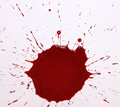Last week, Kevin and I attended the annual IABPA training conference in Boulder, Colorado. By all accounts it was a very successful conference – well organized, good talks, good workshops, and it was great to see old friends and make some new ones.
 There were about 147 participants from all over the US, Canada, Europe, and Southeast Asia. There were even students from Japan and The Netherlands who paid their own way to the conference. The Rocky Mountain Association of Bloodstain Pattern Analysts [RMABPA] and Boulder Police Department conference organizers – Tom ‘Grif’ Griffin [Colorado Bureau of Investigation], Colleen Wilcox [Boulder Police Department], Rich Tewes [Pioneer Forensics], and their team – did a great job with the ‘new’ 4-day workshop format.
There were about 147 participants from all over the US, Canada, Europe, and Southeast Asia. There were even students from Japan and The Netherlands who paid their own way to the conference. The Rocky Mountain Association of Bloodstain Pattern Analysts [RMABPA] and Boulder Police Department conference organizers – Tom ‘Grif’ Griffin [Colorado Bureau of Investigation], Colleen Wilcox [Boulder Police Department], Rich Tewes [Pioneer Forensics], and their team – did a great job with the ‘new’ 4-day workshop format.
There were some very interesting talks – one that stands out for me was Michael Maloney’s [no relation!] talk on Combat Crime Scenes in Iraq and how the US Naval Criminal Investigative Service [NCIS] team had to modify their SOPs and equipment to work in a war zone. There were also some pretty choice quotes – Gary Gillespie [Environmental Science & Research, New Zealand] “Why couldn’t there have been five?” and LeeAnn Singley’s [Grayson Singley Associates] comment about her “clock”.
As with previous conferences I had a great opportunity to demonstrate HemoSpat and discuss it with attendees. I’d like to thank all those who took the time to let me give a quick demo for the very positive response. We also met with some licensees and had some great feedback. This may result in a research project with one of our European licensees which would be quite exciting for me.
Special thanks to Sheri Shimamoto [Lakewood, Colorado Police Department] who drove us around the Red Rocks area after the conference was over. Given that we were attending the conference the majority of the time we were in Boulder, it was great to see a tiny bit of the country.
I look forward to seeing everyone again in Portland, Oregon next year!
Andy Maloney
Lead Developer, HemoSpat

 There were about 147 participants from all over the US, Canada, Europe, and Southeast Asia. There were even students from Japan and The Netherlands who paid their own way to the conference. The Rocky Mountain Association of Bloodstain Pattern Analysts [
There were about 147 participants from all over the US, Canada, Europe, and Southeast Asia. There were even students from Japan and The Netherlands who paid their own way to the conference. The Rocky Mountain Association of Bloodstain Pattern Analysts [ We’ve added a section on the website dedicated to
We’ve added a section on the website dedicated to